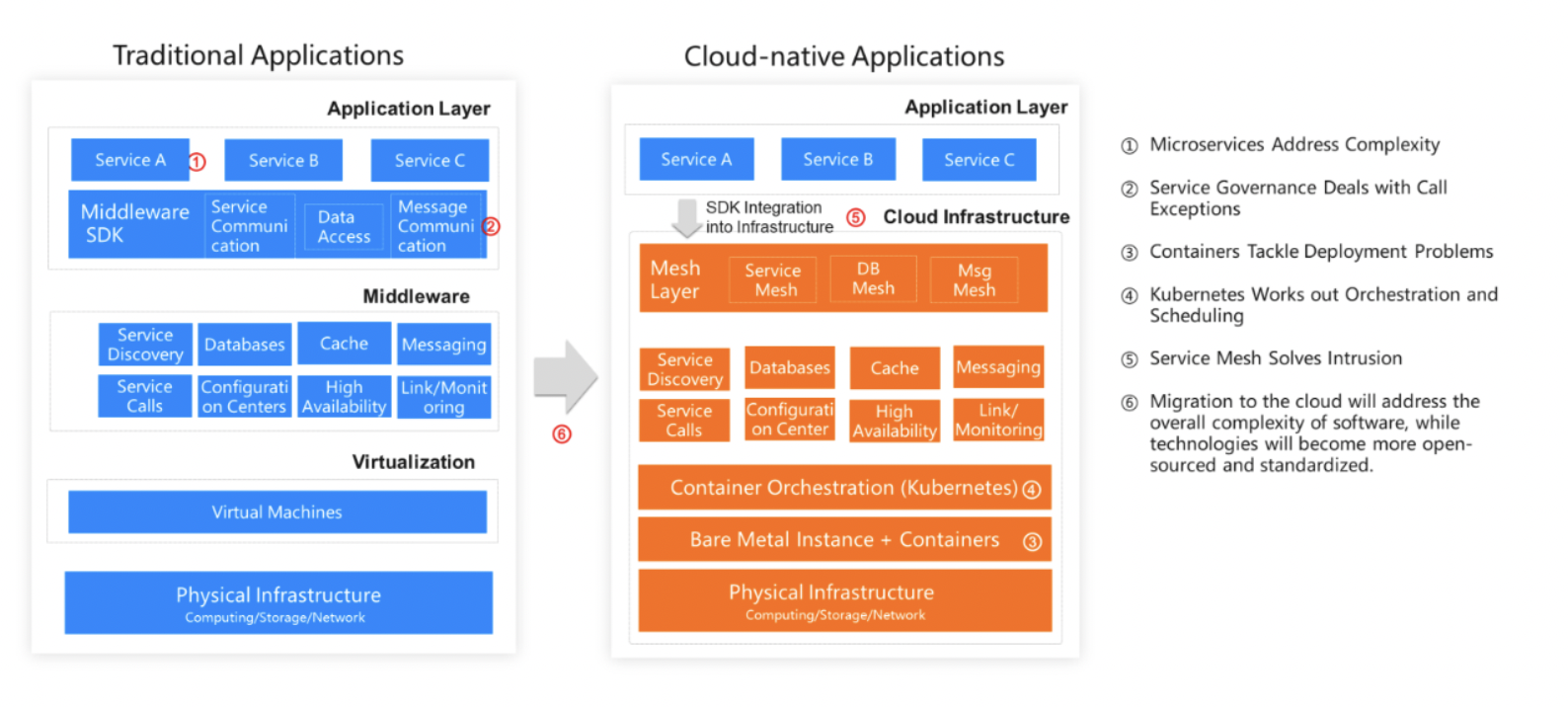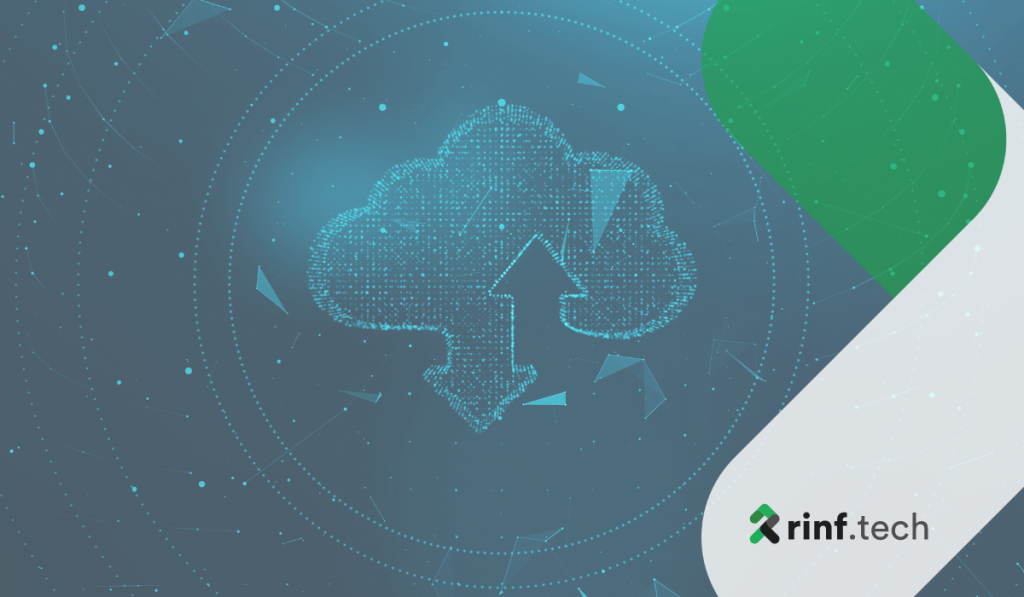
Navigating Cloud Migration: Overcoming Challenges and Maximizing Benefits
Exploring some of the key considerations and challenges in migrating legacy applications to the cloud and sharing practical strategies for a successful transition.
As such, it’s critical to adopt cloud cost optimization strategies to clear up the confusion and control cloud costs while maximizing cloud usage and efficiencies. This approach helps enterprises better manage their cloud infrastructure and services from providers like Amazon Web Services (AWS), Google Cloud Platform (GCP), and Microsoft Azure.
As every small business won’t remain small, thinking big helps lead to better planning, providing unique insights, and hopefully some big wins.
In this article, we’ll share top six strategies that prove to be effective when it comes to cloud cost optimization.
Cloud cost optimization is an approach that identifies the most cost-effective way to run applications and workloads on the cloud. It looks at providing the most business value at the lowest possible cost.
Cloud optimization strategies range from simple business management strategies to complex engineering and scientific techniques like decision science and analytics, forecasting, modeling, and so on.
Key benefits of cloud cost optimization include:
Organizations can avoid surprises down the road by understanding potential hidden cloud costs. Businesses also risk choosing the wrong cloud service without a cloud cost optimization strategy.
The pay-per-use cloud computing model comes with a whole host of benefits like freedom and flexibility for engineering teams. But these benefits come at a price that can be hefty at times.
Cloud services providers don’t make reducing or understanding cloud costs easier. In fact, just the simple act of deciphering a cloud bill is often daunting and sometimes intimidating.
So, it’s no surprise that cloud cost optimization continues to be a top priority for organizations for the fifth year in a row.
Last year, as many as 61% of organizations planned to optimize cloud costs. Another 76% measures cloud progress according to cost efficiency.
It’s crucial to design and build enterprise systems cost-efficiently. You must leverage available capabilities in your unique cloud environment to employ every cost advantage.
For example, you can leverage auto-scaling and only pay for the servers actively running in the data center server pool. Auto-scaling ensures that cloud capacity is already paid for and is not used excessively.
But leveraging a cloud-native design is not straightforward. You have to read the whitepapers, architectural best practices, and documentation to get the most bang for your buck.
If you already have in-house staff with the necessary skills and experience, adapting available cloud infrastructure designs to best suit your goals shouldn’t be too challenging.
However, it’s imperative to get clarity over functional vs. non-functional requirements. It’s important to note that optimizing purely to lower costs will impact performance and quality. So, finding a balance while designing your cloud infrastructure is vital.

Image source: alibabacloud.com
One of the easiest ways to reduce cloud costs is to find and eliminate unused resources. Administrators and developers often set up temporary servers or storage services to perform certain cloud functions. Whenever they fail to switch off or erase these resources with terminated instances, you’re going to pay unnecessarily.
Once you have identified and removed unused resources, you have to make it a regular undertaking to keep costs down. Similarly, find idle resources and consolidate computing jobs into fewer instances to ensure cloud optimization.
On-demand capacity reservations and reserved instances will feel like you’re moving your data center back on-premises. But it’s worth the effort as these forecasts will concentrate on baseline utilization and provide an opportunity to pay upfront for the cloud capacity you will surely use.
This approach creates opportunities to leverage discounts offered by cloud services providers. Some volume-based discounts are significant, and it’s definitely worth exploring to understand your available options better. But don’t fall into the trap of overprovisioning.
Real-time monitoring will alert you to out-of-band spending and unexpected surges. By closely tracking cost anomalies, organizations can quickly address potential expense issues before it destroys the budget.
Heat maps also help optimize cloud costs by showing the difficulties related to computing demands. For example, companies can leverage this information regularly to establish and automate start and stop times for their development servers.
Although administrators can do this manually, using automation and heat map tools are more advantageous. At the same time, different teams within the organization should also be responsible and held accountable for cloud budgeting, tracking, and spending.
We can do this by creating individual cloud accounts for each team or department. While this approach is beneficial, it’s critical to mandate a standard method for identifying cloud resource ownership.
As resource naming standards often fail, use resource tags or labels to add additional properties and differentiate them. Think of it as the cloud equivalent to barcode labels. As retroactive active tags are challenging and resource-intensive, try to do this in advance.
Hanhaa, a global IoT supply chain visibility and cargo company, once turned to us with a request to build a Cloud-agnostic enterprise platform that includes 3 main components (web portal, APIs, device trackers), all running on Google Cloud, AWS and Azure IoT.
The solution was to become the company’s key market differentiator.
As the client was completing the 1st phase of software prototyping and development that had successfully attracted investors and demonstrated the capabilities of the platform, they were looking for a provider that could get their product to the enterprise level and help optimize Cloud expenses.
Based on the client’s current architecture, our software engineering team proposed and implemented the following architectural improvements:
On top of that, we optimized Cloud to ensure Hanhaa can run their CRM solution in a cost-effective way.
Feel free to check out this case story to learn more about the project and how it benefitted our client.
While we constantly strive to collect more data, more data isn’t always a good thing. Sometimes some of your problems might result from collecting and storing too much data. So, it’s important to understand what types of data you’re collecting, how it will be used, and by whom.
Knowing this information will help you clear the noise that often accompanies extraneous data. For example, DevOps teams need the ability to compare and contrast and look backward. This helps them understand what’s broken or where an anomaly originated. So, they must always have access to granular data they can slice and dice.
However, finance teams often need to look ahead than look back. They want to make future financial projections. This means that although both DevOps and finance teams are looking at the same data, they need to look at it in different formats that best match their roles.
By giving access to the right data, to the right people, at the right time, we can go a long way to reducing waste and controlling cloud costs.
To continue to cut cloud costs and access savings, make cloud cost optimization a routine exercise. The best approach here is to standardize best practices for cloud operations and assign the responsibility of cloud governance to an individual or team to ensure consistency, accountability, and continuous improvement.
By maintaining cloud efficiency, you can avert racking up unexpected costs without anyone noticing it. As you can see, there’s a bunch of stuff going on, and you have to make lots of difficult decisions. The best way forward is to prioritize actions by observing cloud operations and related spending.
To get the most value, investigate potential trade-offs between costs, dependability, performance, and redundancy. Start the conversation with cloud vendors and seek out bulk discounts.
Although this process is far from straightforward, it gets easier over time. So, don’t waste another minute without reaping the benefits of cloud cost optimization. With a little bit of effort and routine practice, you can save big on your next cloud budget.

Exploring some of the key considerations and challenges in migrating legacy applications to the cloud and sharing practical strategies for a successful transition.

This article offers organizations a comprehensive guide to navigating the complexities of transitioning legacy applications to cloud infrastructure.

Delving into the essence of successfully implementing ML projects, exploring strategic approaches, the comprehensive life cycle from conception to deployment, and real-world industry applications.
Copyright © 2023 rinf.tech. All Rights Reserved.
Terms & Conditions. Cookie Policy. Privacy Policy.
Politica Avertizari de Integritate (RO)